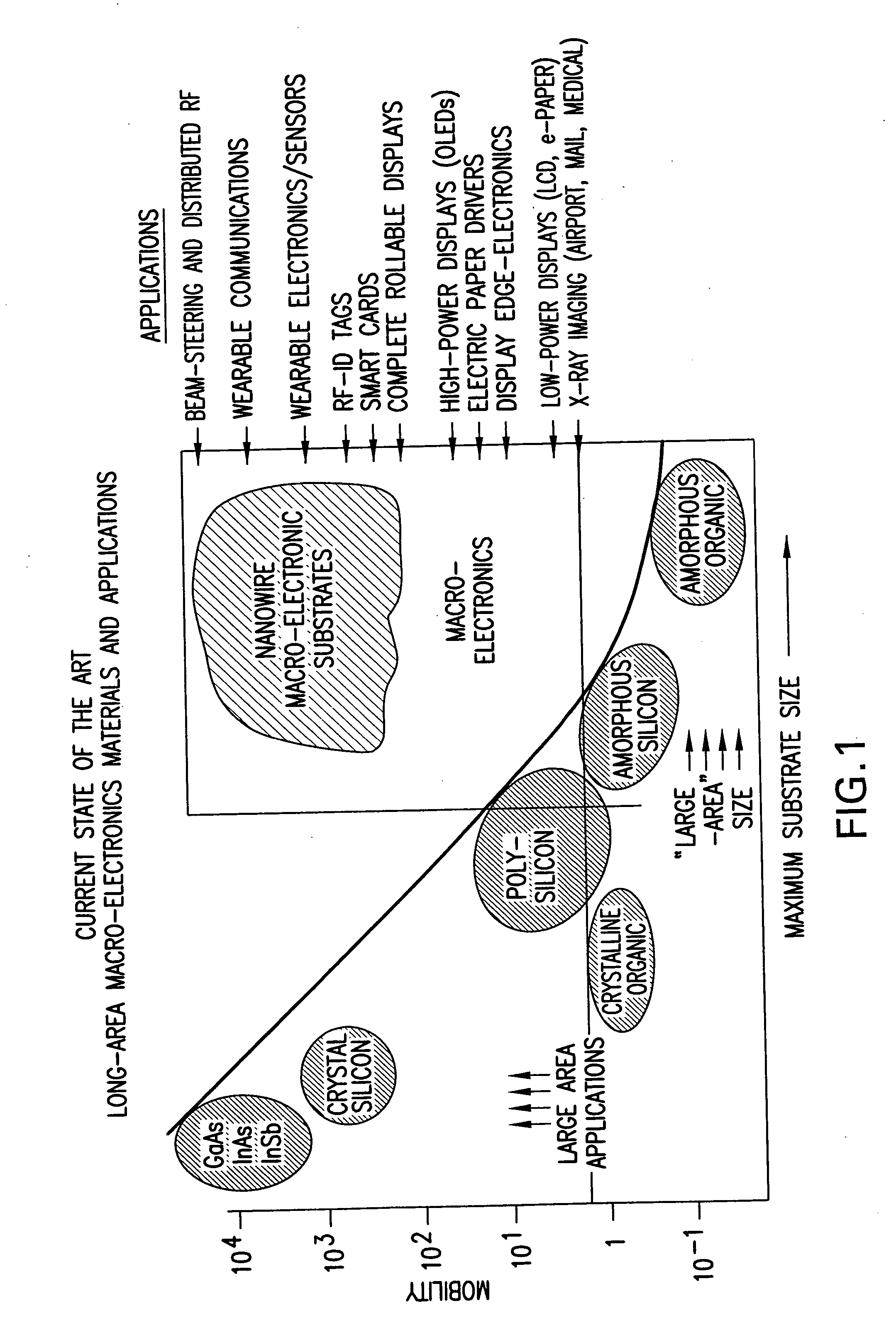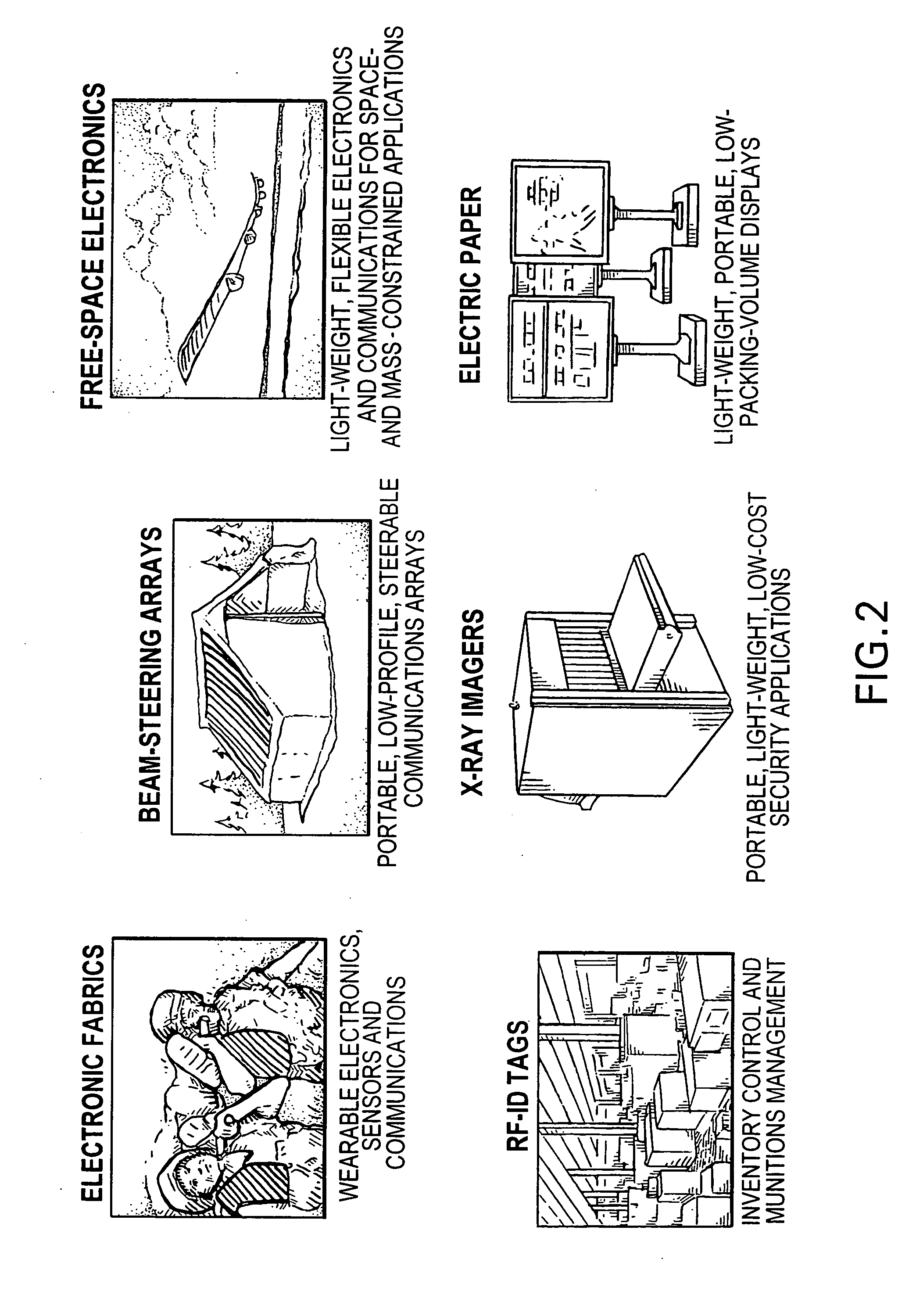Phased array systems and methods
a phased array and array technology, applied in the direction of antennas, electrical equipment, radio transmission, etc., can solve the problems of incompatibility with low temperature substrates, inability to meet the requirements of low temperature substrates, and relatively expensive processes
- Summary
- Abstract
- Description
- Claims
- Application Information
AI Technical Summary
Benefits of technology
Problems solved by technology
Method used
Image
Examples
Embodiment Construction
Introduction
[0104] In many ways, the electronics industry today is in the same position it was fifty years ago. At that time, the introduction of discrete transistors provided the world with unprecedented functionality. By integrating multiple discrete transistors together, functionality was further increased, leading to the broad availability of portable electronics. Unfortunately, at that time, integration was done by hand, causing the electronics industry to rapidly reach a plateau, beyond which integrating more than a few thousand individual transistors became prohibitive in terms of cost and yield. This phenomenon was referred to as the “Tyranny of Numbers”.
[0105] This practical limit, resulting from the need for heterogeneous integration of multiple discrete components, brought the integrated electronics industry to a standstill that was only resolved through the invention of a revolutionary new concept: the silicon microcircuit. The silicon microcircuit allowed seamless in...
PUM
 Login to View More
Login to View More Abstract
Description
Claims
Application Information
 Login to View More
Login to View More - R&D
- Intellectual Property
- Life Sciences
- Materials
- Tech Scout
- Unparalleled Data Quality
- Higher Quality Content
- 60% Fewer Hallucinations
Browse by: Latest US Patents, China's latest patents, Technical Efficacy Thesaurus, Application Domain, Technology Topic, Popular Technical Reports.
© 2025 PatSnap. All rights reserved.Legal|Privacy policy|Modern Slavery Act Transparency Statement|Sitemap|About US| Contact US: help@patsnap.com



